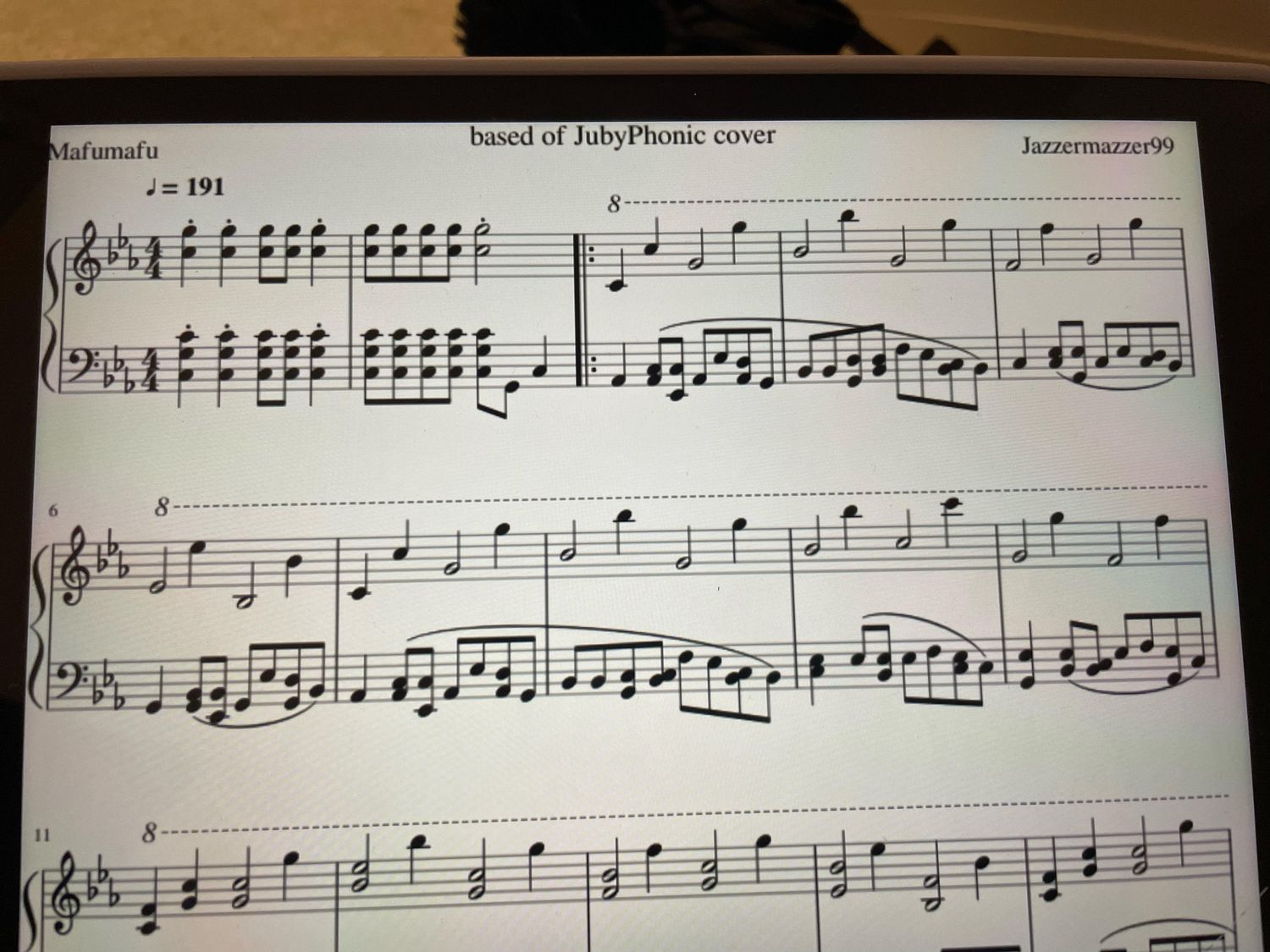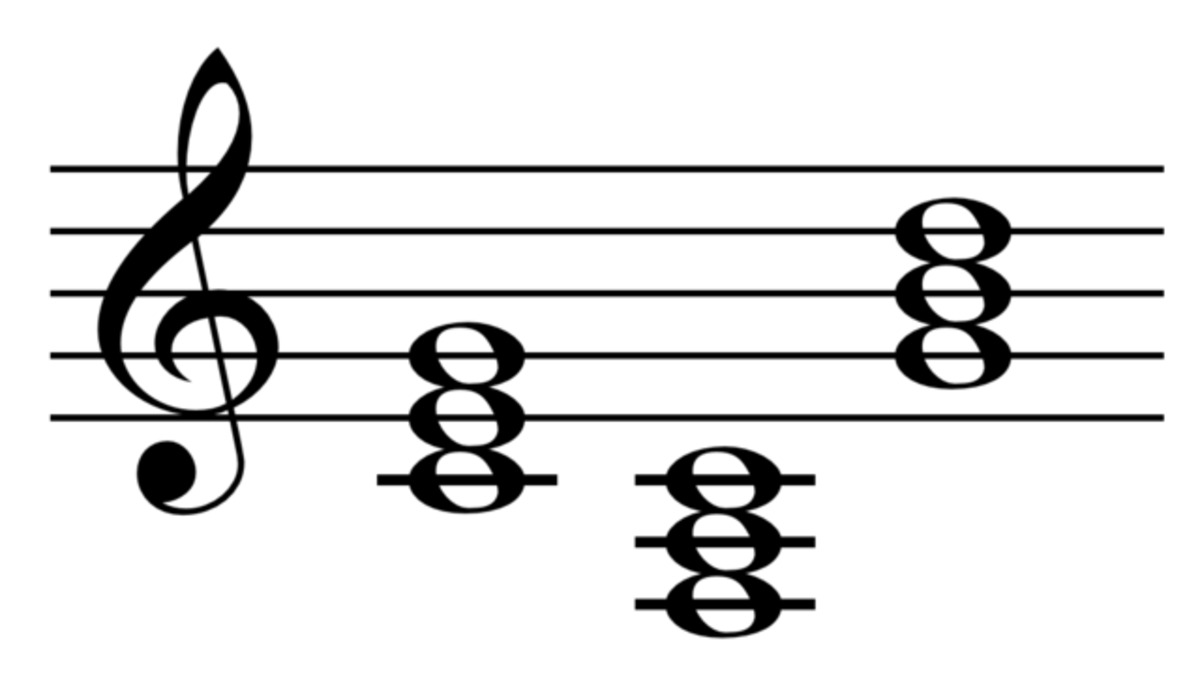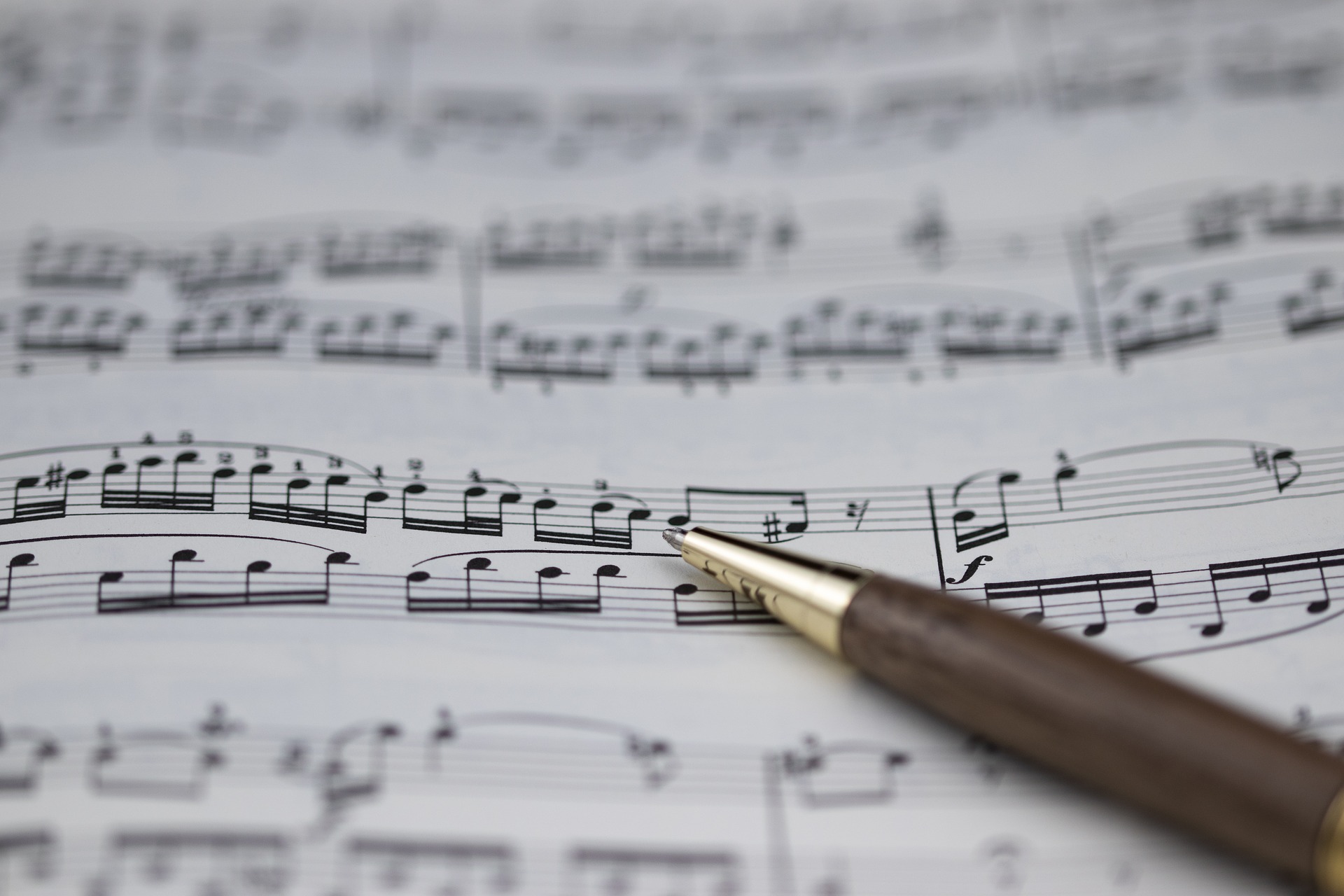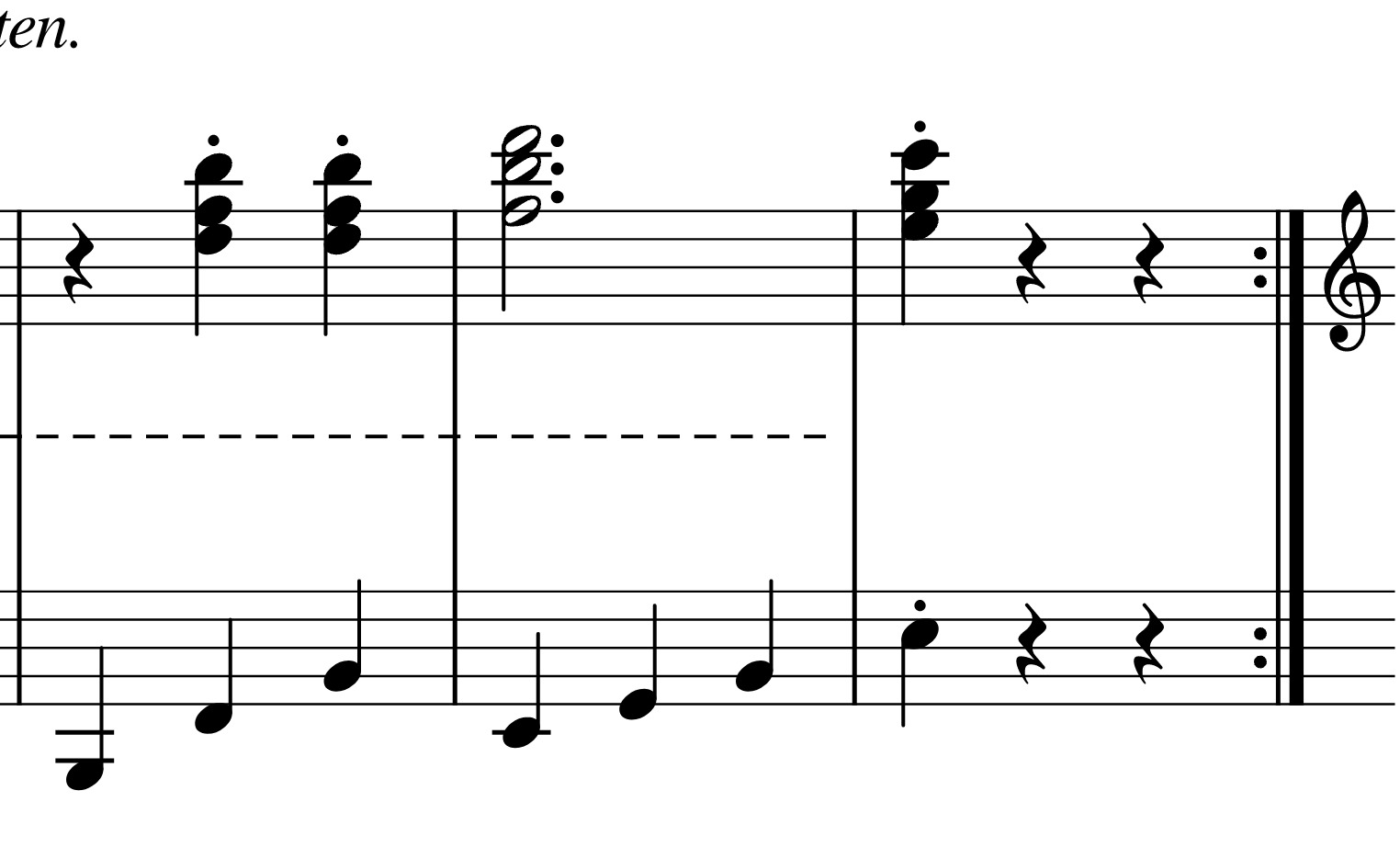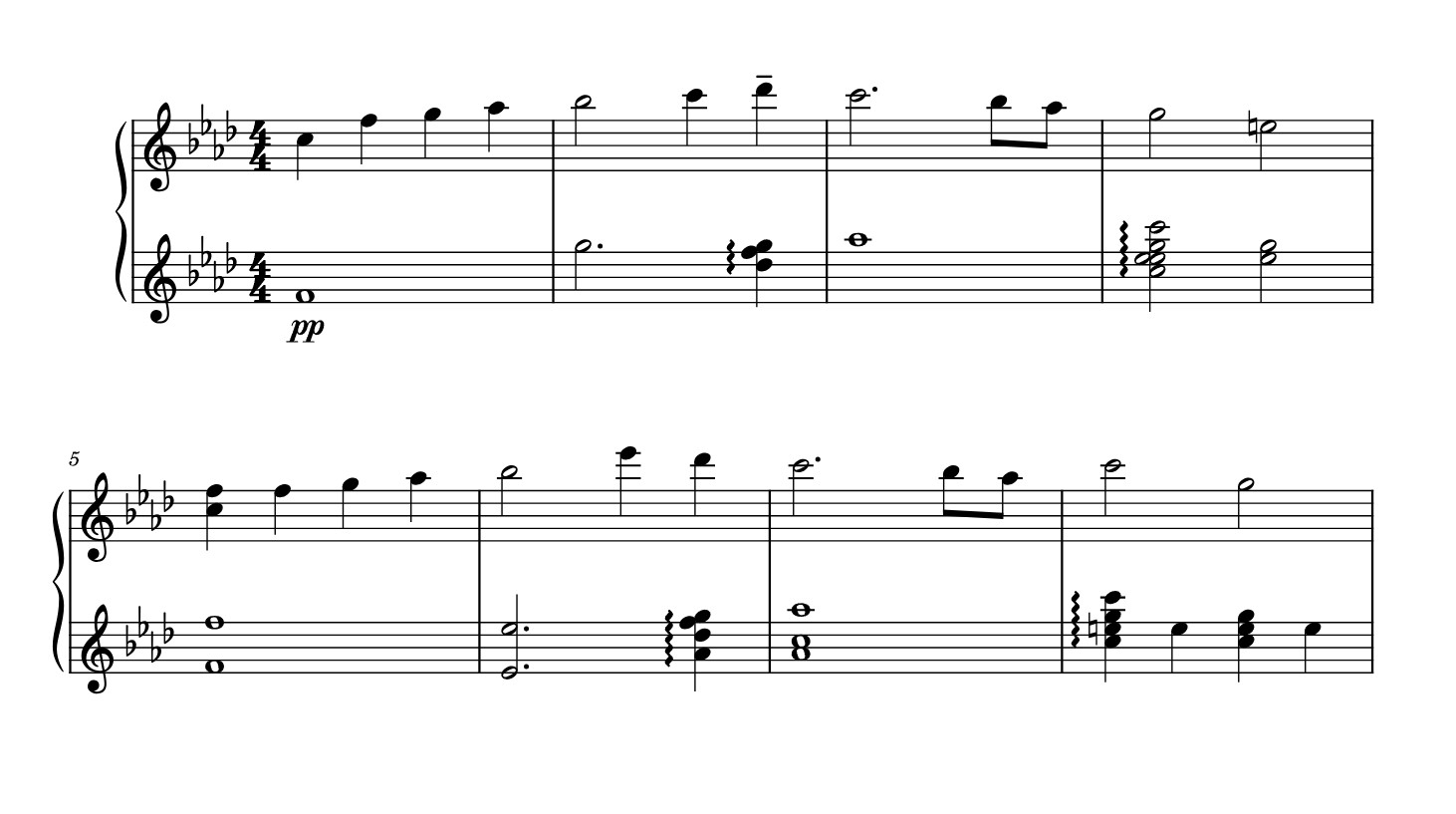Home>Production & Technology>Music Theory>What Is An Accidental In Music Theory


Music Theory
What Is An Accidental In Music Theory
Published: January 30, 2024
Discover the meaning and significance of accidental in music theory. Learn how it affects the notes and key signatures in your compositions. Enhance your understanding of music theory today!
(Many of the links in this article redirect to a specific reviewed product. Your purchase of these products through affiliate links helps to generate commission for AudioLover.com, at no extra cost. Learn more)
Table of Contents
Introduction
Music theory is the study of the underlying principles and structure of music. It encompasses various elements, such as melody, harmony, rhythm, and form. One essential component of music theory that plays a significant role in shaping melodies and harmonies is the concept of accidentals.
Accidentals are symbols used in sheet music to alter the pitch of a note by raising or lowering it. They provide flexibility and allow musicians to create more expressive and complex melodies. Understanding accidentals is crucial for musicians and composers, as they can influence the overall mood, harmonic progression, and tonal center of a piece of music.
In this article, we will delve into the world of accidentals in music theory. We will explore their definition, their role in shaping musical compositions, and the different types of accidentals commonly encountered. Additionally, we will examine how accidentals impact the notational aspect of sheet music, as well as their relationship with key signatures and tonal centers. Finally, we will touch upon the interpretation of accidentals in music performance.
Whether you are a musician, a music student, or simply have a curiosity for the inner workings of music, this article will provide you with a comprehensive understanding of accidentals and their significance in music theory.
Definition of an Accidental
In music theory, an accidental is a symbol used to raise or lower the pitch of a note by a half step or semitone. It is called an “accidental” because it is not part of the key signature of a particular key, but rather appears as an alteration to a specific note within a measure.
Accidentals can be thought of as musical “surprises” that temporarily change the pitch of a note. They are denoted by specific symbols placed before a note, altering its pitch for the duration of the measure or until canceled by another accidental or a natural sign.
Accidentals allow composers and musicians to introduce chromatic notes into a composition, which adds color, tension, and variety to the musical piece. They can create dissonance, enhance melodic lines, or contribute to harmonic progressions.
Accidentals are not limited to altering the pitch of the primary diatonic scale notes. They can also affect other musical elements, such as intervals, chords, and scales. This flexibility provides musicians with countless possibilities for artistic expression and musical exploration.
It’s important to note that the effects of accidentals are temporary and are limited to the measure in which they are placed. Once the measure is complete, the altered note returns to its original pitch unless altered again by a subsequent accidental.
Accidentals can be found in a wide range of musical genres and styles, from classical music to jazz, and from pop to experimental music. Having a solid understanding of how accidentals function is crucial for musicians, composers, and music enthusiasts alike.
Now that we have established the definition of accidentals, let’s explore their role in music theory and how they shape musical composition and performance.
The Role of Accidentals in Music Theory
Accidentals play a crucial role in music theory by introducing chromaticism, altering the pitch of notes, and expanding the harmonic and tonal possibilities within a composition. They allow composers and musicians to deviate from the diatonic scale, creating tension, adding color, and enhancing the overall expressiveness of the music.
One of the primary functions of accidentals is to create dissonance and tension. By introducing augmented or diminished intervals, accidentals can produce musical moments of unrest or suspense. This tension is often resolved through the use of a subsequent note or chord that brings the harmony back into a state of stability. Such harmonic progressions are fundamental in shaping the emotional and dramatic aspects of a piece.
In addition to altering individual notes, accidentals are also used to modify and enrich chords. By adding sharps or flats to chord tones, composers can create unique harmonies that deviate from the standard triads found in a particular key. This allows for more complex and sophisticated chord progressions, which contribute to the overall harmonic richness of a composition.
Accidentals are also essential in defining tonal centers and modulations. By introducing accidentals that are not part of the original key signature, composers can subtly shift the tonal center of a piece. This modulation adds variety and interest to the music and is often accompanied by changes in harmony, melodic contour, and overall mood.
Furthermore, accidentals have a significant impact on the melodic aspects of music. By altering the pitch of a note, they can create melodic leaps, chromatic lines, and melodic ornamentations. This adds complexity and variety to melodies, making them more memorable and engaging for the listener.
Overall, accidentals are a powerful tool in the hands of composers and musicians. They allow for the exploration of new sounds, the creation of tension and release, and the expression of emotions and ideas that go beyond the confines of traditional diatonic scales. By understanding the role of accidentals in music theory, musicians can unleash their creativity and push the boundaries of musical possibilities.
Common Types of Accidentals
Accidentals come in various shapes and forms, each with a distinct function and effect on the pitch of a note. Understanding the different types of accidentals is essential for musicians and composers to accurately read and interpret sheet music. Here are the most common types of accidentals:
- Sharp (#): The sharp symbol raises the pitch of a note by a half step or semitone. When a sharp is placed before a note, it represents that the note should be played one half step higher than the original pitch.
- Flat (♭): The flat symbol lowers the pitch of a note by a half step or semitone. When a flat is placed before a note, it indicates that the note should be played one half step lower than the original pitch.
- Natural (♮): The natural symbol cancels the effect of any previous accidentals on a note and restores it to its natural pitch. If a note has been sharpened or flattened before in the same measure and needs to return to its original pitch, a natural sign is used.
- Double Sharp (x): The double sharp symbol raises the pitch of a note by two half steps or a whole step. It is used to denote notes that are already sharp in the key signature and need to be raised further.
- Double Flat (♭♭): The double flat symbol lowers the pitch of a note by two half steps or a whole step. It is used to denote notes that are already flat in the key signature and need to be lowered further.
These accidentals can be combined with other symbols, such as dots or ties, to create even more complex alterations to the pitch and duration of a note. The combination of accidentals and additional musical notation allows for intricate and nuanced musical expression.
It’s important to note that accidentals can also appear in key signatures, indicating the default alteration of certain notes for the entire piece. However, when accidentals appear within the measures themselves, they override the key signature and represent temporary alterations for that specific measure.
Now that we have explored the common types of accidentals, let’s delve into their effects on notes and how they are notated in sheet music.
Effects of Accidentals on Notes
Accidentals play a crucial role in altering the pitch of notes in music. Different types of accidentals have specific effects on the pitch, creating distinct musical colors and textures. Understanding how accidentals affect notes is essential for accurately interpreting and performing music. Let’s explore the effects of accidentals on notes:
- Sharp (#): When a sharp is placed before a note, it raises the pitch of the note by a half step. For example, if a natural note “C” is followed by a sharp (C#), it is played as C raised by a half step to C#.
- Flat (♭): A flat lowers the pitch of a note by a half step. For instance, if a natural note “D” is followed by a flat (Db), it is played as D lowered by a half step to Db.
- Natural (♮): When a natural sign is placed before a note, it cancels the effect of any previous accidentals and restores the note to its original pitch. If a note has been altered by a sharp or flat earlier in the measure, a natural sign nullifies that alteration.
- Double Sharp (x): A double sharp raises the pitch of a note by two half steps or a whole step. It is used to denote that a note, which is already sharp in the key signature, needs to be raised further by a whole step.
- Double Flat (♭♭): The double flat symbol lowers the pitch of a note by two half steps or a whole step. It is used to indicate that a note, which is already flat in the key signature, needs to be lowered further by a whole step.
Accidentals can create tension, dissonance, or resolution within a musical piece. The altered notes stand out from the diatonic notes, providing melodic and harmonic interest, and contributing to the overall character of the composition.
It’s important to note that the effects of accidentals are temporary and typically last for the duration of the measure in which they are placed. However, they can be extended beyond a single measure using a tie or dotted notation.
Now, let’s explore how these accidentals are notated in sheet music.
Notating Accidentals in Sheet Music
In sheet music, accidentals are notated through specific symbols placed before a note to indicate the alteration of its pitch. These symbols ensure that the musician accurately interprets and performs the intended musical composition. Let’s explore how accidentals are notated in sheet music:
The sharp symbol (#) is placed before a note to raise its pitch by a half step. For example, if a natural note “F” is to be played as F#, the sharp symbol is placed before the note in the sheet music.
The flat symbol (♭) is used to lower the pitch of a note by a half step. If a natural note “A” is to be played as Ab, the flat symbol is placed before the note in the sheet music.
The natural symbol (♮) is used to cancel the effect of any previous accidental and return a note to its natural pitch. If a note has been altered by a sharp or flat within the same measure, the natural symbol cancels that alteration and indicates that the note should be played as its natural pitch.
For notes that require a higher alteration, the double sharp symbol (x) is used. It raises the pitch of a note by two half steps or a whole step. If a note that is already sharp in the key signature needs to be raised further by a whole step, the double sharp symbol is placed before the note in the sheet music.
Similarly, the double flat symbol (♭♭) is used to lower the pitch of a note by two half steps or a whole step. If a note that is already flat in the key signature needs to be lowered further by a whole step, the double flat symbol is placed before the note in the sheet music.
Accidentals in sheet music are typically placed right before the notehead, just to the left of the note stem or on the same side as the note stem, depending on the direction of the stem. It is crucial to pay attention to the rhythmic value of the note and place the accidental appropriately to ensure clarity in reading and performing the music.
Accidentals can also be placed in parentheses to show cautionary or editorial accidental markings, indicating that the alteration might be temporary or a result of editorial decision rather than the original intention of the composer.
Now that we have explored how accidentals are notated in sheet music, let’s delve into the relationship between accidentals and key signatures.
Key Signatures and Accidentals
Key signatures and accidentals are intimately connected in music theory, as they both influence the pitch and tonal center of a musical composition. Key signatures indicate the default alterations of certain notes throughout a piece, while accidentals alter specific notes temporarily within a measure. Let’s explore the relationship between key signatures and accidentals:
A key signature is a collection of sharps or flats placed at the beginning of a staff, indicating the default alterations of certain notes for the entire piece. Key signatures establish the tonal center or key of a composition and provide a framework for the diatonic notes and chords that will be used.
Accidentals, on the other hand, are alterations to notes that deviate from the default key signature. They appear as symbols placed directly before a note and temporarily modify its pitch. Accidentals override the key signature for the notes within a specific measure, introducing chromaticism and expanding the harmonic possibilities beyond the diatonic scale.
When an accidental appears in a measure, it alters the pitch of the affected note for that measure only. The altered note returns to its original pitch in subsequent measures, unless altered again by another accidental or by the key signature. This interplay between key signatures and accidentals allows for intricate and nuanced tonal and harmonic variations within a piece of music.
It’s important to note that accidentals and key signatures can sometimes conflict. In such cases, accidentals take precedence over the key signature within the same measure. The accidental indicates the temporary alteration, while the key signature provides the default alterations for the entire piece.
Accidentals can occur when a composer intentionally deviates from the key signature to introduce chromaticism, create tension, or modulate to a different tonal center. The use of accidentals in conjunction with key signatures allows composers to express a wide range of emotions, explore different harmonic progressions, and add depth and complexity to their musical compositions.
Now that we have explored the relationship between key signatures and accidentals, let’s discuss how accidentals interact with tonal centers.
Accidentals and Tonal Centers
Accidentals play a significant role in shaping tonal centers in music. They can create shifts in tonality, establish temporary tonal centers, and add color and expression to a musical composition. Understanding the relationship between accidentals and tonal centers is crucial for musicians and composers. Let’s explore how accidentals interact with tonal centers:
Tonal center, also known as the key or tonal key, refers to the central pitch or note around which a piece of music revolves. It provides a sense of stability and serves as a reference point for the listener’s perception of the harmonic framework.
Accidentals can alter the tonal center by introducing chromatic notes or shifting the harmony in unexpected ways. When an accidental, such as a sharp or flat, is consistently used throughout a piece, it can temporarily establish a new tonal center or modulate to a different key.
For example, if a composition is in the key of C major, which has no sharps or flats in its key signature, the sudden appearance of a G# in the music may indicate a modulation to the key of E major or its relative minor, C# minor. This accidental introduces a new tonal center and creates a sense of tension and departure from the original key.
Accidentals can also be used to create temporary tonal centers within a musical phrase or section. By emphasizing certain altered notes, composers can create a tonal ambiguity that resolves, leading the listener to establish a new tonal center.
Furthermore, the use of accidentals can create dissonance and tension, leading to a heightened sense of resolution when the harmony returns to the original tonal center. This adds to the emotional impact and expressive quality of the music.
The interaction of accidentals and tonal centers allows composers to explore complex harmonic progressions, employ modal mixture, and create unique tonal flavors within a composition. It adds depth and richness to the music, keeping the listener engaged and intrigued.
It is worth noting that accidentals alone do not determine the tonal center. The overall harmonic context, melodic progression, and resolution also contribute to the establishment and perception of the tonal center.
Now that we have explored the relationship between accidentals and tonal centers, let’s move on to discuss the interpretation of accidentals in music performance.
Interpretation of Accidentals in Music Performance
The interpretation of accidentals is a vital aspect of music performance. Accurately understanding and executing accidentals brings out the intended musical expression, clarity, and tonal color in a composition. Here are some key considerations for interpreting accidentals in music performance:
1. Attention to detail: It is essential to pay close attention to the accidentals indicated in the sheet music. Each accidental alters the pitch of a note, and a missed accidental can result in incorrect interpretation or unintended dissonance.
2. Musical context: Interpreting accidentals requires a deep understanding of the musical context, including the key signature, the harmonic progression, and the overall tonal structure. This understanding helps guide the interpretation and expression of the accidentals in relation to the surrounding notes and chords.
3. Intention and expression: Accidentals often serve expressive purposes, such as creating tension, emphasizing unique melodic or harmonic elements, or enhancing the emotional impact of a musical phrase. As a performer, it is important to convey the intended expression and musical character through the interpretation of accidentals.
4. Consistency throughout a measure: Accidentals typically affect all instances of a particular note within the same measure. It is crucial to maintain consistency in interpreting accidentals throughout the measure, ensuring that the altered note retains its pitch alteration until the next measure or until cancelled by a natural sign or another accidental.
5. Dynamics and articulation: The interpretation of accidentals should take into account the dynamics and articulation indicated in the sheet music. The weight, attack, and release of the altered note can vary depending on the musical context, helping to shape the overall dynamic contour and expression of the piece.
6. Collaboration with other performers: In ensemble performances, it is important to communicate and coordinate with other musicians to ensure consistent interpretation and execution of accidentals. Consensus on pitch alterations and musical expression contributes to a cohesive and unified performance.
7. Musicality and individual interpretation: While there are generally accepted guidelines for interpreting accidentals, there is also room for individual interpretation and artistic expression. Musicians bring their own unique musicality and style to a performance, and their personal interpretation of accidentals can enhance the overall musical experience.
By carefully considering these aspects and investing time in practice and rehearsal, performers can master the art of interpreting accidentals and bring out the full potential of a musical composition.
After exploring the importance of interpreting accidentals in music performance, let’s wrap up our discussion.
Conclusion
Accidentals play a fundamental role in music theory, shaping melodies, harmonies, and tonal centers. Understanding and utilizing accidentals allows musicians and composers to create expressive and vibrant compositions. Through this article, we have explored the definition and common types of accidentals, as well as their role in music theory.
We have seen how accidentals introduce chromaticism, create tension and resolution, and expand the tonal and expressive possibilities in music. They play a crucial role in altering the pitch of notes, modifying chords, and establishing temporary tonal centers.
Accidentals are notated using specific symbols such as sharps, flats, naturals, double sharps, and double flats, placed before the note in sheet music. They exist in harmony with key signatures, which provide default alterations, but accidentals can temporarily override the key signature to introduce new tonal centers or deviate from the established key.
In music performance, accurate interpretation of accidentals is essential. Attention to detail, understanding the musical context, expressing the intended musicality, and collaborating with other performers all contribute to a compelling and cohesive performance.
Whether you are a musician, composer, or music enthusiast, a solid understanding of accidentals empowers you to create and appreciate the intricate beauty and emotion of music.
So, let us embrace the expressive power of accidentals, explore their possibilities, and unlock new dimensions of creativity and musicality.




